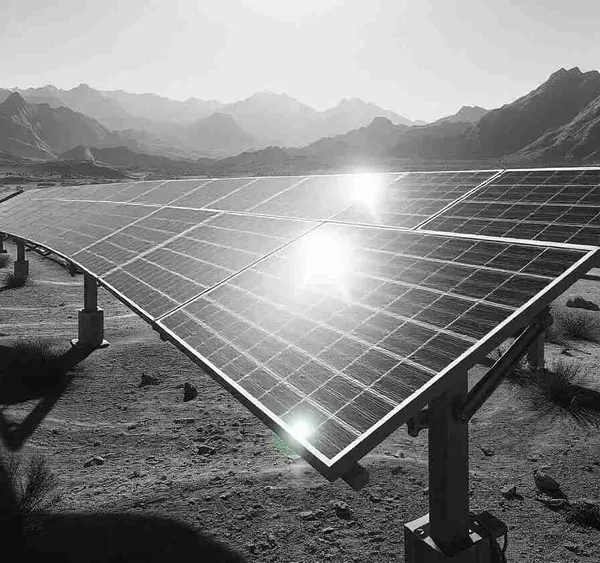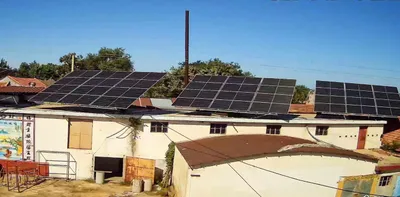
YIPU's solar tracking system is designed to enhance energy generation
REQUEST A QUOTEOne-stop purchasing
Request
- User Intent
- Context Requirements
- Possible Actions
Solution
- Quality Components
- Site Conditions
- Configurability
Quotation
- Terms and Conditions
- Payment Methods
- Loading Date
Order Processing
- Quality Components
- Site Conditions
- Configurability
Delivery
- Tested
- Packaging
- Pre-shipment photos
Why Choose Us
We focus on meeting the needs of our clients, offering full-service support from product consultation and installation assistance to post-installation maintenance. Our expert team is always available to provide technical support and solutions, ensuring your project runs smoothly.
Outstanding Product Performance
Our solar tracking systems are designed with the latest technologies to deliver superior performance under various environmental conditions. Whether single-axis or dual-axis tracking, our systems significantly enhance the energy generation efficiency, maximizing energy yield.
High Reliability and Durability
Our tracking systems undergo stringent quality control processes and are made from corrosion-resistant materials with high-quality craftsmanship to ensure long-term stable operation even in harsh weather conditions. Multiple tests guarantee the stability and safety of our systems under extreme wind speeds, snow loads, and other environmental challenges.

Fast Delivery and Global Service
Our production capacity ensures timely delivery, while we offer comprehensive after-sales support worldwide. No matter where you are, our service team is ready to provide quick responses and technical assistance to ensure the smooth execution of your projects.
Affordability and Cost-Effectiveness
We are committed to offering highly competitive prices without compromising on quality. Our tracking systems are designed for efficiency and cost optimization, reducing the overall investment in your project. Through large-scale manufacturing and supply chain optimization, we provide the most cost-effective solutions in the industry, helping you achieve better long-term economic returns.
Things You Should Do
By understanding these factors, project teams can make well-informed decisions during the design phase, reducing construction difficulty, mitigating potential risks, and enhancing system safety, stability, and cost-effectiveness.
-
Capacity
The system's capacity determines the required quantity of photovoltaic (PV) modules and tracking systems, making it a key factor in solar tracker selection and system economic viability analysis.
-
Latitude and Longitude
Latitude and longitude determine solar irradiance, sunlight duration, and climate conditions at the project site. Accurate geographic data aids in selecting solar tracker and optimizing PV system efficiency.
-
PV Panels
The size of PV panels dictates the specifications and load-bearing requirements of the brackets. Brackets must match the size and weight of the modules to ensure stable installation and maximize space utilization.
-
Wind Load
Local wind speed records, typically spanning 20-50 years, are essential for determining the design and reinforcement of bracket. The structure must be robust enough to withstand wind loads and prevent overturning, displacement, or damage.
-
Snow Load
In regions with substantial snowfall, snow loads place additional demands on the load-bearing capacity of brackets. Snow load design is crucial to avoid deformation or damage of modules or brackets due to snow weight.
-
Terrain
Terrain conditions (e.g., flat land, mountainous areas, slopes) directly impact the design and installation complexity of brackets. Complex terrain may require special support designs or installation techniques to maintain system stability and structural integrity.
-
Foundation
The foundation type (e.g., PHC, concrete foundation) is selected based on soil properties and terrain conditions. It directly affects the stability and anti-overturning capacity of the bracket.
-
Height from the Ground
The ground clearance of PV modules influences system cooling, maintenance accessibility, and the impact of environmental factors (e.g., vegetation, snow accumulation) on panel shading.
Frequently asked questions
-
" How can I obtain a quote for solar tracking systems? "
The price of solar tracking systems is closely related to the specifics of your project. Generally, if you provide us with basic project information, we will promptly offer a pricing and configuration proposal tailored to your needs. The basic project details include: capacity, latitude, terrain, solar panel specifications, etc. For more detailed information, please contact our sales engineers.
-
" Can I apply to become a local distributor? "
Absolutely. Solar tracking systems and related products represent a growing industry trend with significant potential. If your team has local industry resources and technical expertise, we warmly welcome you to become our partner. We believe this partnership will be a win-win opportunity.
-
" Do you provide local installation services? "
Due to the global distribution of solar projects, we generally do not offer installation services. However, you can hire local contractors to carry out the installation or complete it under our guidance. For projects that are representative and of sufficient scale, we can negotiate on-site technical support in accordance with local regulations and associated costs.
-
" Can I purchase all the ancillary materials, such as square tubes and purlins, from your company along with the solar tracking system? "
No problem, we can offer you a one-stop shopping service. Square tubes, C-channel steels, bolts, and other ancillary materials are essential for the installation of solar tracking systems. If you wish to purchase these materials alongside the tracking system, we are happy to provide you with configurations and pricing to help you estimate your project costs more accurately.
-
" I'm wondering what type of solar tracker you have. "
As a specialized PV tracker manufacturer, we can supply or customize vertical single-axis, horizontal single-axis, and dual-axis tracking systems to meet your project requirements. Our vertical single-axis PV tracker, a unique product, offers distinct advantages, especially for smaller-scale applications. We also have on-board solar trackers for RVs, yachts and other vehicles.
-
" Which solar tracker should I choose: single-axis or dual-axis? "
Generally speaking, single-axis trackers typically come at a lower cost than dual-axis trackers, while the latter offers higher energy yield. Single-axis trackers are often employed in larger-scale projects. Dual-axis trackers, on the other hand, become a better choice when land is limited.
-
" How does a solar tracker work? "
It works using motors and a control system. The system uses either light sensors to detect the brightest point or pre-programmed astronomical algorithms based on time and location. The tracker continuously adjusts the panels' angle to ensure they are always perpendicular to the sun's rays. This maximizes the amount of sunlight captured, significantly boosting electricity generation compared to fixed-tilt panels. It's all about optimizing energy capture.
